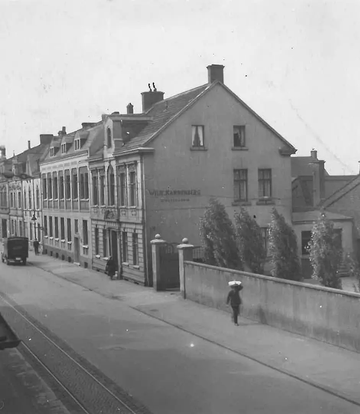
History
From the cradle to independence
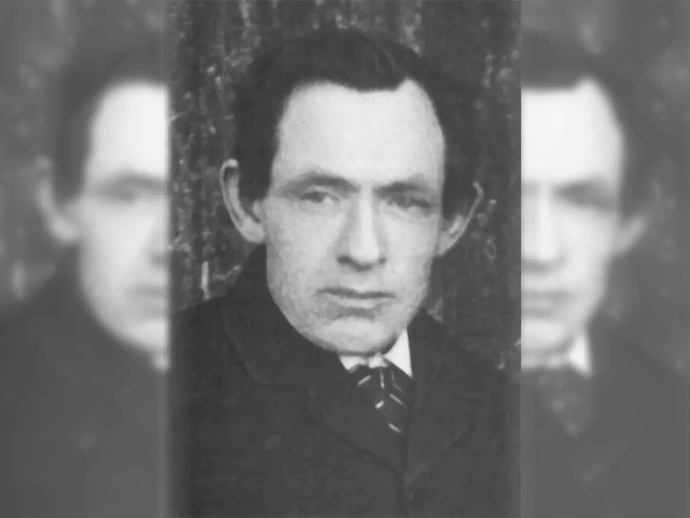
Company founded in 1865
Wilhelm Karrenberg, born in 1835, founds the company in 1865. Wilhelm Karrenberg probably starts his own business with nothing more than a vice, some files and other small hand tools to produce his own furniture locks. The first headquarters of the company is also his apartment.
From the cradle to independence
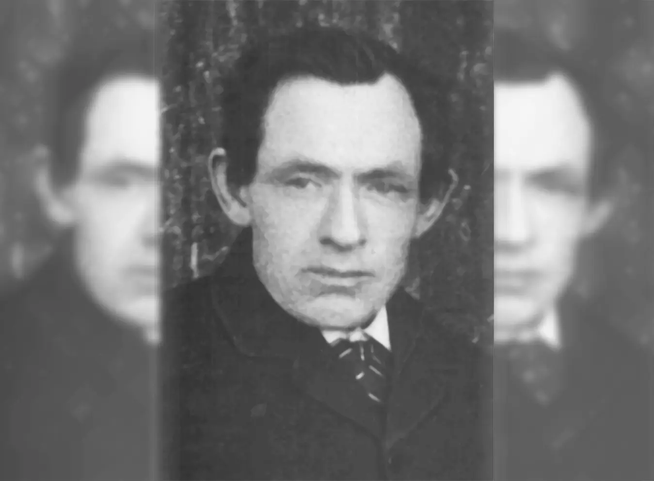
Company founded in 1865
Wilhelm Karrenberg, born in 1835, founds the company in 1865. Wilhelm Karrenberg probably starts his own business with nothing more than a vice, some files and other small hand tools to produce his own furniture locks. The first headquarters of the company is also his apartment.
From craftman's business to family company
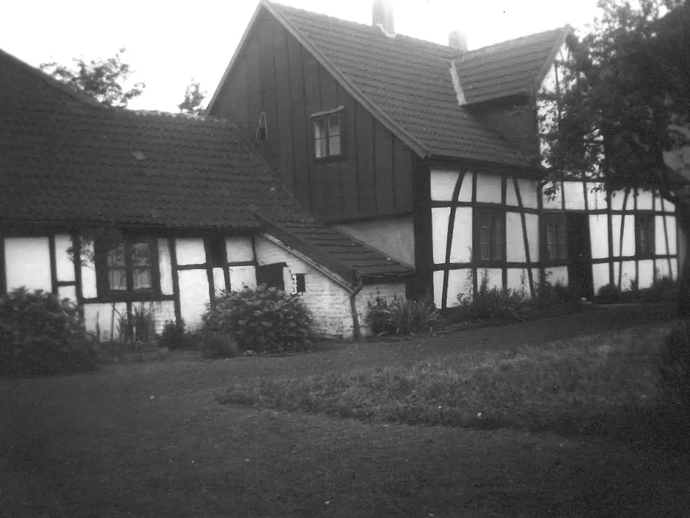
The company finds a new headquarters
When the company finds its new headquarters, in a half-timbered house with a small workshop/forge in 1869, it is only about 200 metres away from where the head office is located today. In the 70s and 80s, the smithy is expanded several times and already has a capacity of 18 employees. During this time, his three sons also join the company: Julius, August and Ernst. In 1884, lock production is expanded from furniture locks to door lock manufacturing.
From craftman's business to family company
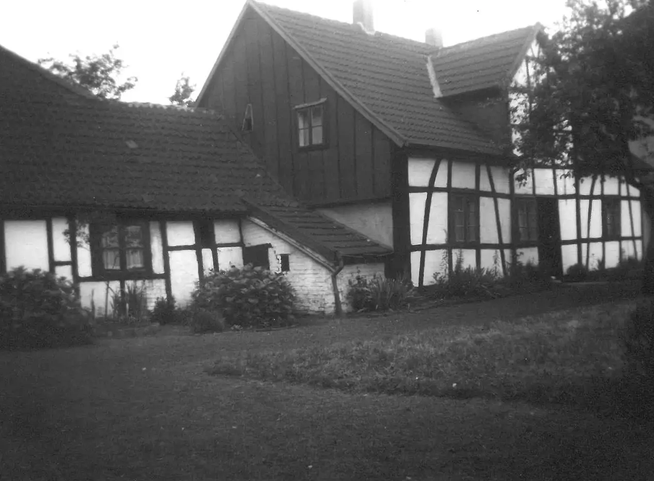
The company finds a new headquarters
When the company finds its new headquarters, in a half-timbered house with a small workshop/forge in 1869, it is only about 200 metres away from where the head office is located today. In the 70s and 80s, the smithy is expanded several times and already has a capacity of 18 employees. During this time, his three sons also join the company: Julius, August and Ernst. In 1884, lock production is expanded from furniture locks to door lock manufacturing.
The road to industrialisation
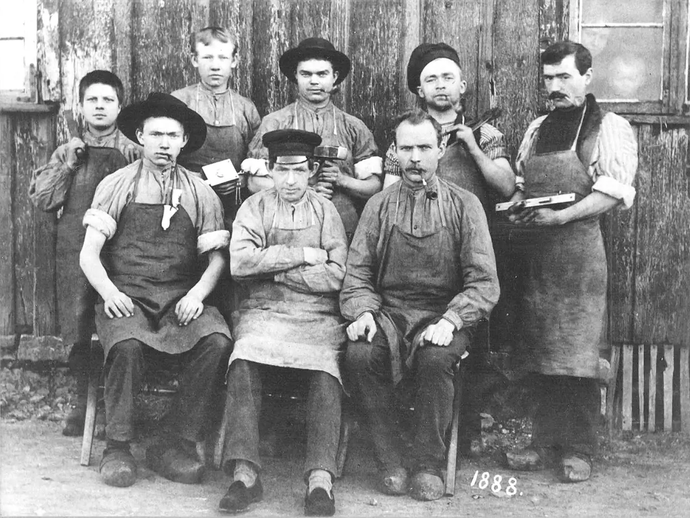
The next generation takes over
In order to accommodate the company's steady growth, a new property is acquired, which still remains the company's headquarters today. The technology of lock manufacturing begins to change. Until this point, locks had only been manufactured by hand, but now a gas engine is used to power the machines. Wilhelm Karrenberg transfers the company to his three sons. The first entry in the commercial register on 28 June 1901 names the sons Julius, August and Ernst as partners in the general partnership.
The road to industrialisation
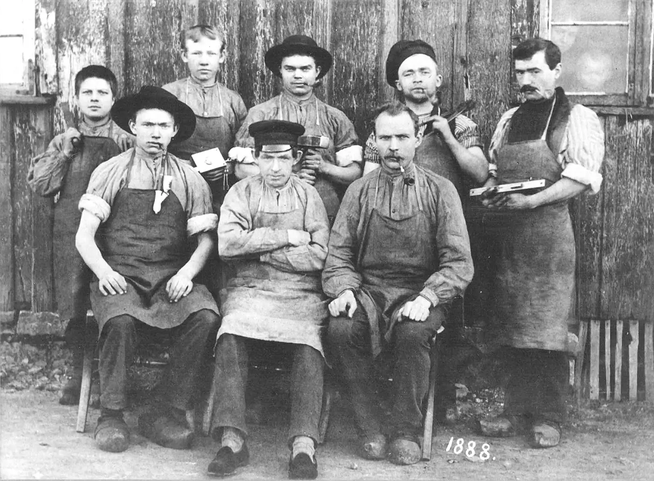
The next generation takes over
In order to accommodate the company's steady growth, a new property is acquired, which still remains the company's headquarters today. The technology of lock manufacturing begins to change. Until this point, locks had only been manufactured by hand, but now a gas engine is used to power the machines. Wilhelm Karrenberg transfers the company to his three sons. The first entry in the commercial register on 28 June 1901 names the sons Julius, August and Ernst as partners in the general partnership.
Resumption of lock production
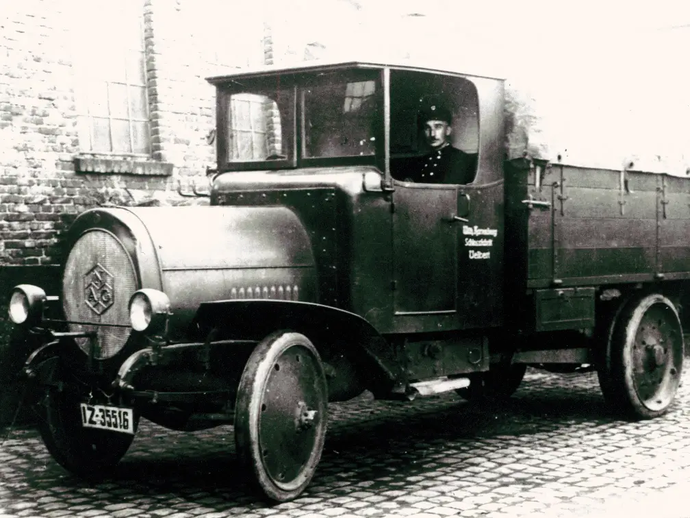
The company grows and becomes mobile
The First World War brings great difficulties. Once the war is over, the manufacture of door locks resumes. The fact that an extension is built in 1921 shows how quickly the company begins endeavouring to further expand its production. The very first lorry, made by NAG, is purchased in 1923. Two years later, the first passenger car is also purchased.
Resumption of lock production
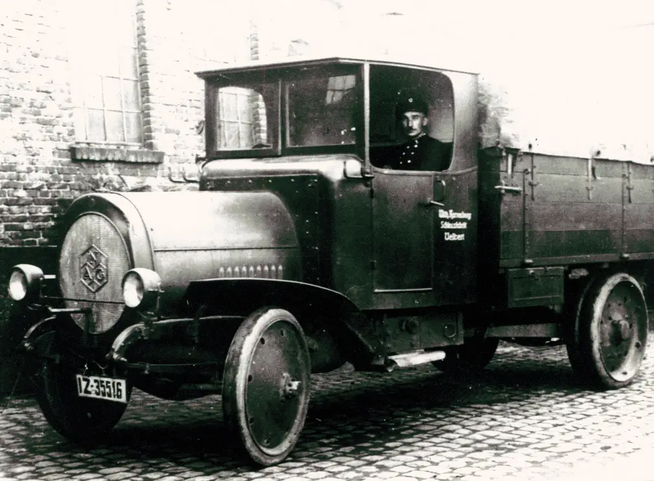
The company grows and becomes mobile
The First World War brings great difficulties. Once the war is over, the manufacture of door locks resumes. The fact that an extension is built in 1921 shows how quickly the company begins endeavouring to further expand its production. The very first lorry, made by NAG, is purchased in 1923. Two years later, the first passenger car is also purchased.
The first WILKA cylinder lock
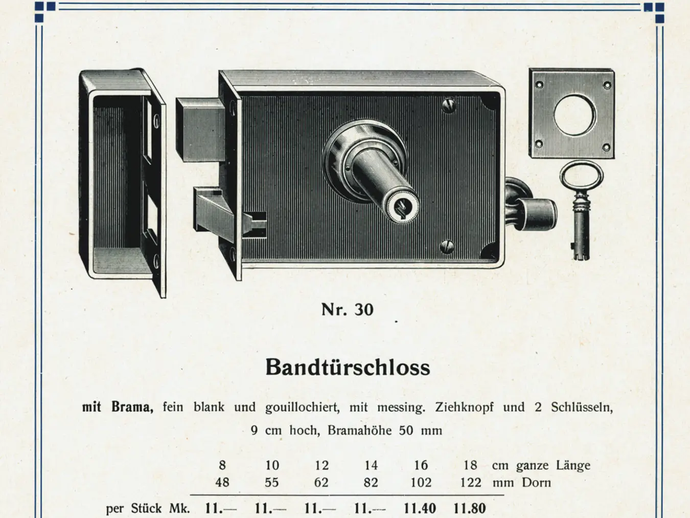
The focus is on mortise locks
Once the hyperinflation crisis ends, the range is expanded. The company changes from a specialised factory for rim locks to a manufacturer of mortise locks. While the focus is initially on the Bramah lock, this is replaced after the advent of the cylinder lock. The locking cylinders are also marketed for the first time under the WILKA brand name.
The first WILKA cylinder lock
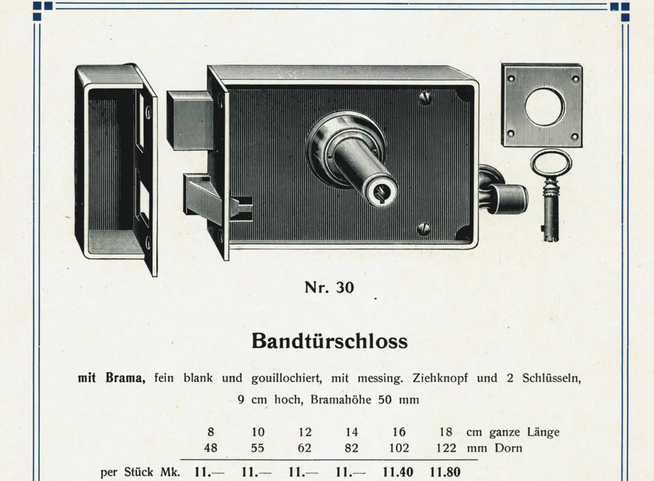
The focus is on mortise locks
Once the hyperinflation crisis ends, the range is expanded. The company changes from a specialised factory for rim locks to a manufacturer of mortise locks. While the focus is initially on the Bramah lock, this is replaced after the advent of the cylinder lock. The locking cylinders are also marketed for the first time under the WILKA brand name.
Global crisis and the Second World War
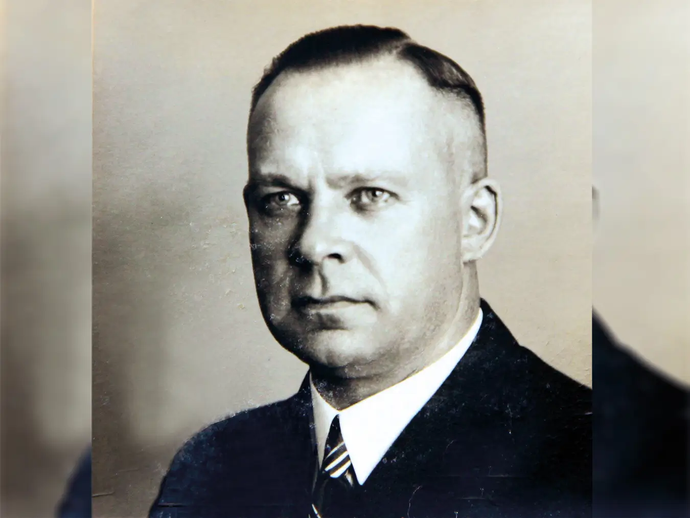
The third generation leads through a difficult time
During the period between the two wars, the company's management is in the hands of Ernst, the youngest son of the founder, and Karl, the eldest son of Julius Karrenberg. After 1928, the global crisis sets in, leading to unprecedented unemployment. Ernst dies shortly before the outbreak of war in 1939, whereupon his son Walter joins the management. The Second World War creates a similar situation to the first. Lock production can only be maintained on a very small scale.
Global crisis and the Second World War
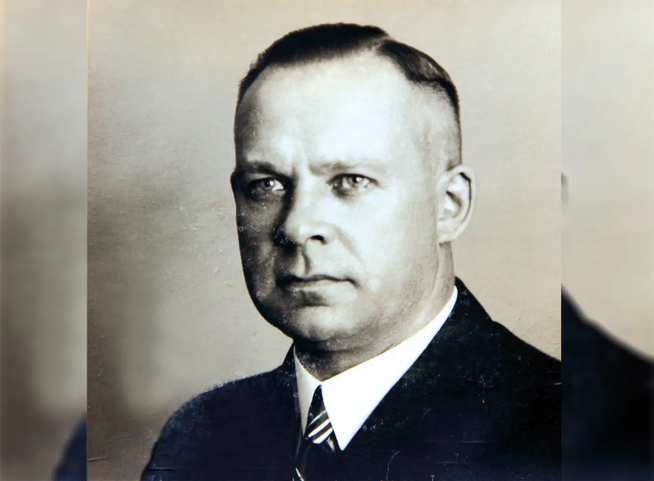
The third generation leads through a difficult time
During the period between the two wars, the company's management is in the hands of Ernst, the youngest son of the founder, and Karl, the eldest son of Julius Karrenberg. After 1928, the global crisis sets in, leading to unprecedented unemployment. Ernst dies shortly before the outbreak of war in 1939, whereupon his son Walter joins the management. The Second World War creates a similar situation to the first. Lock production can only be maintained on a very small scale.
New production methods and first profile cylinders
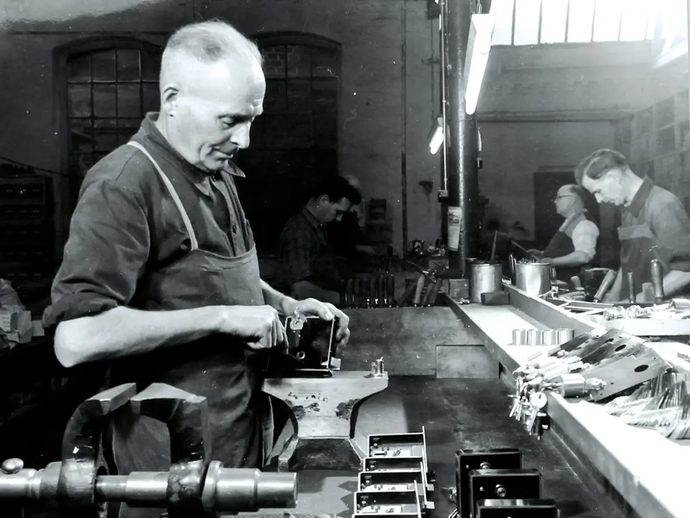
Mass production arrives
The first post-war years are difficult until the currency reform creates the basis for new growth. Hand-crafted locksmithing gives way to mass production. Only a small part of the hand-crafted production remains in order to fulfil special customer requirements. Production of the first profile cylinders began in 1952/53, but the breakthrough does not come until the end of the 1950s.
New production methods and first profile cylinders
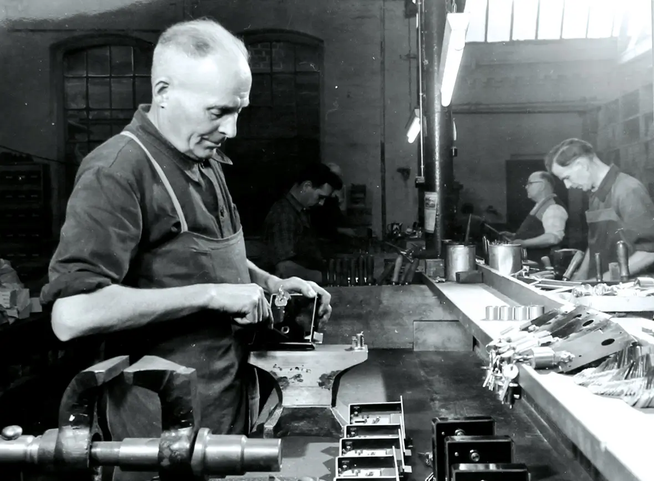
Mass production arrives
The first post-war years are difficult until the currency reform creates the basis for new growth. Hand-crafted locksmithing gives way to mass production. Only a small part of the hand-crafted production remains in order to fulfil special customer requirements. Production of the first profile cylinders began in 1952/53, but the breakthrough does not come until the end of the 1950s.
The 4th generation takes over management
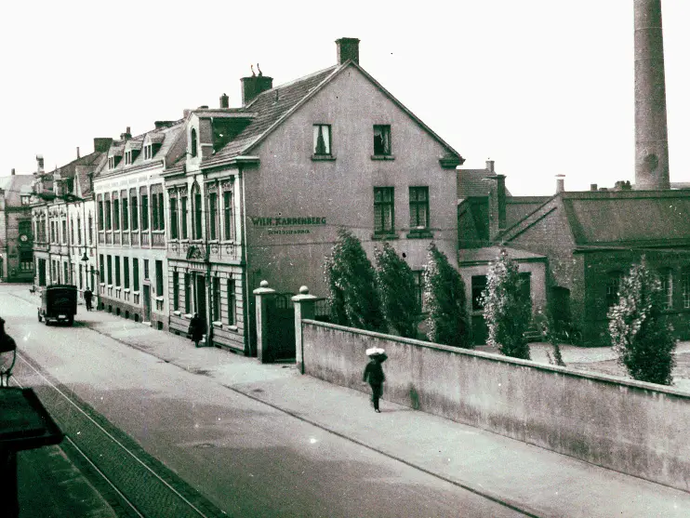
Major investments characterise the future
August Karrenberg, the last son of the founder, dies in 1950. Karl's death in 1954 is a great loss to the company, and he is succeeded in management by his son Friedrich, the first representative of the fourth generation. By 1957, WILKA has around 150 employees. Labour is scarce and the use of machines is becoming increasingly important. Major investments are made in the following years to rationalise the company.
The 4th generation takes over management
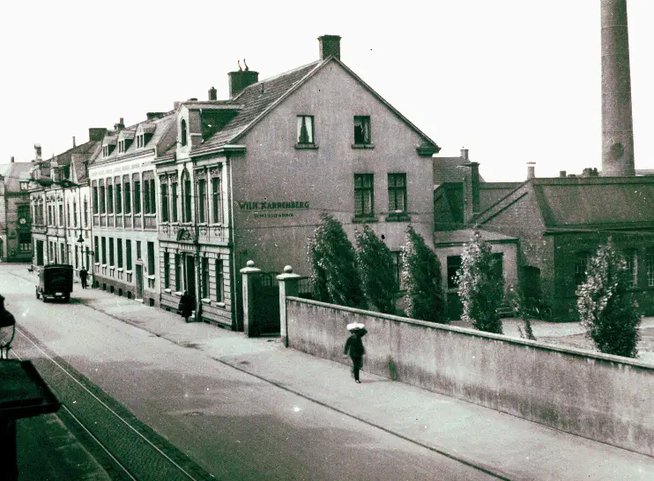
Major investments characterise the future
August Karrenberg, the last son of the founder, dies in 1950. Karl's death in 1954 is a great loss to the company, and he is succeeded in management by his son Friedrich, the first representative of the fourth generation. By 1957, WILKA has around 150 employees. Labour is scarce and the use of machines is becoming increasingly important. Major investments are made in the following years to rationalise the company.
New locks and WILKA cylinders
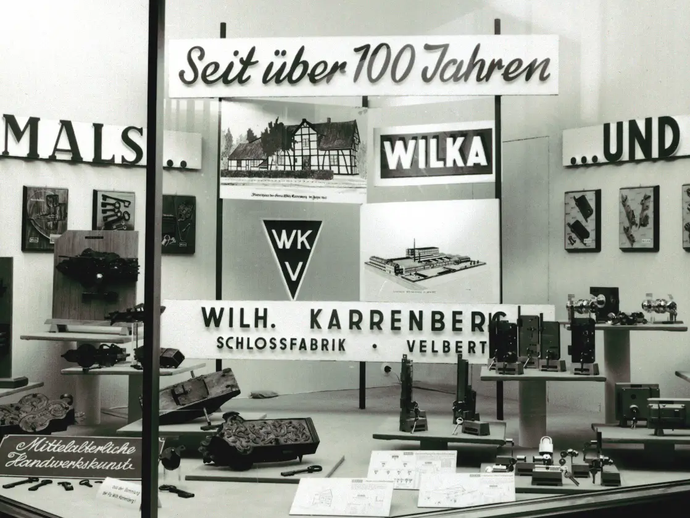
The locks for metal frame doors are introduced
The years from 1966 onwards are particularly significant for the cylinder sector: investments are being made in machines, quite a few of which are manufactured in-house. All areas are affected by this. In 1970, the company now employs 280 people. In the 70s, the lock sector sees the birth of locks for metal door frames. The first anti-panic lock follows in 1979. In 1978, the first, practically pioneering, multi-point lock is installed in Germany. In 1979, the company is granted a patent for angled key cuts, which opens up access to the market for large locking systems. The WILKA trademark is legible in the profile.
New locks and WILKA cylinders
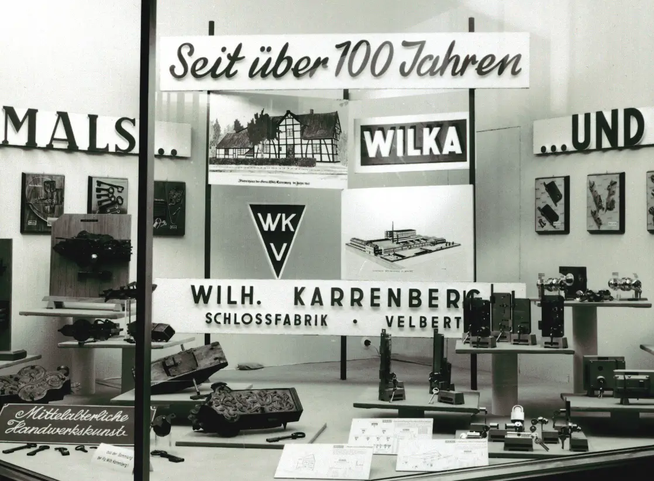
The locks for metal frame doors are introduced
The years from 1966 onwards are particularly significant for the cylinder sector: investments are being made in machines, quite a few of which are manufactured in-house. All areas are affected by this. In 1970, the company now employs 280 people. In the 70s, the lock sector sees the birth of locks for metal door frames. The first anti-panic lock follows in 1979. In 1978, the first, practically pioneering, multi-point lock is installed in Germany. In 1979, the company is granted a patent for angled key cuts, which opens up access to the market for large locking systems. The WILKA trademark is legible in the profile.
New investments in machinery and buildings
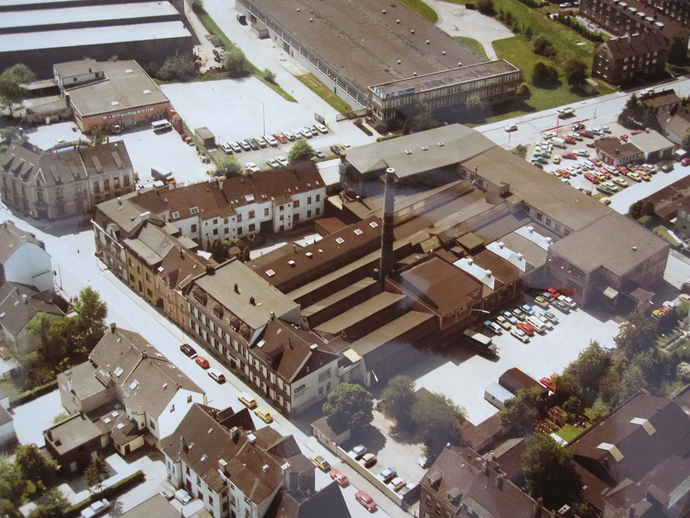
Remodelling measures enable progress
In 1980 WILKA has 290 employees. The multi-point lock is replaced by a complete programme in 1985 – a contribution to the ever-increasing need for security due to rising burglary crime at the time. In order to be able to produce even more precisely, faster and in a more environmentally friendly way, large investments in machinery are made in the 1980s. From 1987 to 1989, the largest new construction and remodelling project in the company's history is carried out.
New investments in machinery and buildings
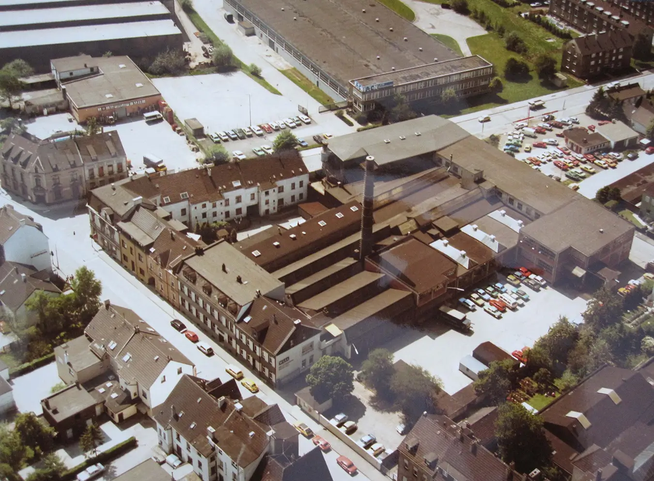
Remodelling measures enable progress
In 1980 WILKA has 290 employees. The multi-point lock is replaced by a complete programme in 1985 – a contribution to the ever-increasing need for security due to rising burglary crime at the time. In order to be able to produce even more precisely, faster and in a more environmentally friendly way, large investments in machinery are made in the 1980s. From 1987 to 1989, the largest new construction and remodelling project in the company's history is carried out.
Change of name and second location
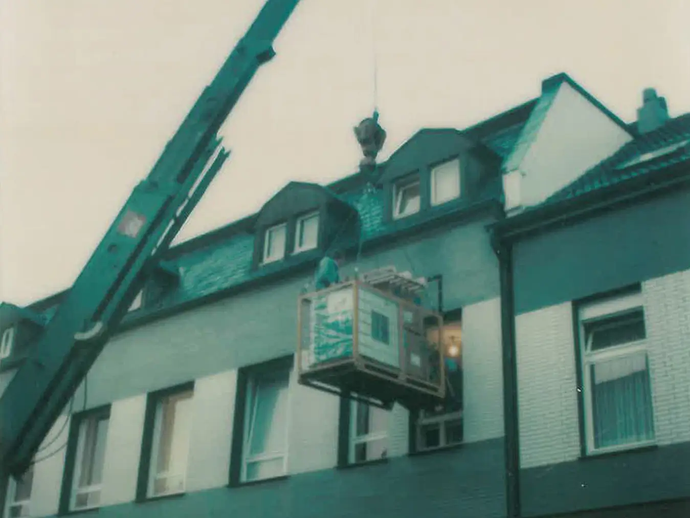
The end of an era brings change
Following the unexpected death of managing partner Friedrich Karrenberg after 30 years of sole responsibility, the company is renamed WILKA Schließtechnik GmbH on 1 January 1990. Wolfgang K. Schlieper, son-in-law of the late Friedrich Karrenberg, and Hans-Joachim Rust, son of co-owner Ruth Rust, are appointed by the shareholders' meeting as successors in management. Around 300 employees work for the company. The company starts using IT.
Change of name and second location
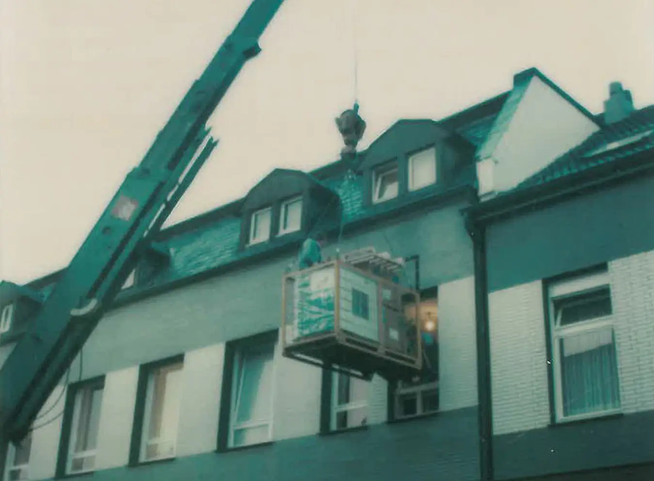
The end of an era brings change
Following the unexpected death of managing partner Friedrich Karrenberg after 30 years of sole responsibility, the company is renamed WILKA Schließtechnik GmbH on 1 January 1990. Wolfgang K. Schlieper, son-in-law of the late Friedrich Karrenberg, and Hans-Joachim Rust, son of co-owner Ruth Rust, are appointed by the shareholders' meeting as successors in management. Around 300 employees work for the company. The company starts using IT.
New location and launch of electronics
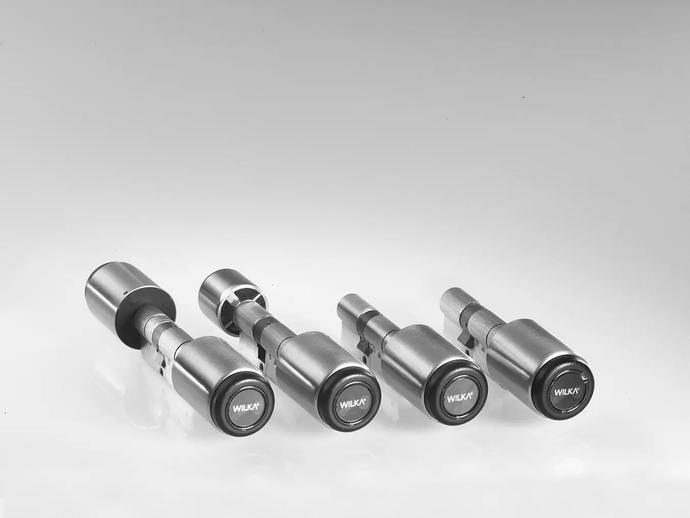
WILKA returns to Wilhelm Karrenberg's roots
The move to a second location is an important milestone in securing the future. In 1991, a plot of land with a production hall is acquired, which, remarkably, stands in exactly the same place as the company founder's house 122 years earlier. Many production areas are being redesigned and the production process in particular is being optimised. Electronic resources, such as CAD systems and archiving systems, are incorporated into everyday working life In 1996, the newly developed electronic locking cylinder is presented to the trade public.
New location and launch of electronics
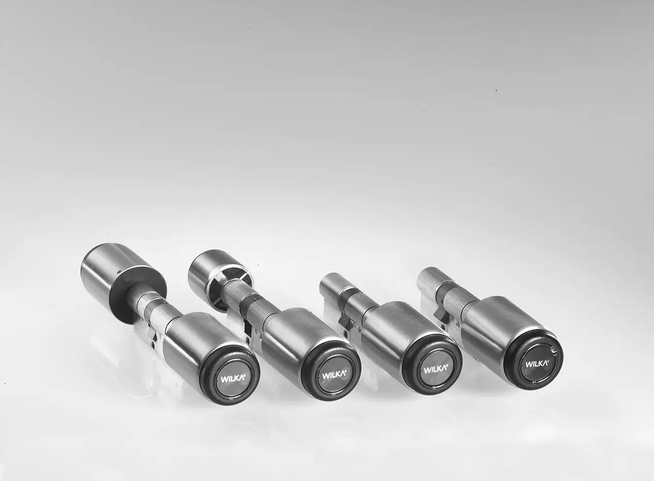
WILKA returns to Wilhelm Karrenberg's roots
The move to a second location is an important milestone in securing the future. In 1991, a plot of land with a production hall is acquired, which, remarkably, stands in exactly the same place as the company founder's house 122 years earlier. Many production areas are being redesigned and the production process in particular is being optimised. Electronic resources, such as CAD systems and archiving systems, are incorporated into everyday working life In 1996, the newly developed electronic locking cylinder is presented to the trade public.
Further internationalisation
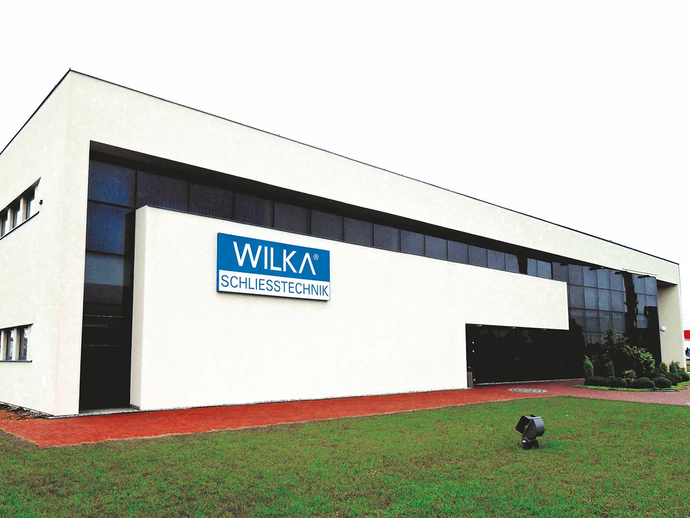
WILKA Polska opens up the Eastern European market
In 2001, the first WILKA reversible key system is presented to the market. It is positioned in the top security segment. In the lock area, crossbar and additional locks in an unusual design form a striking step. The first subsidiary is opened in Leszno, Poland, in autumn 2001 to counteract the downturn in construction activity in Germany, which has been ongoing for years. This is intended to cater for the future markets of Eastern Europe with a local service location. At the end of 2001, the first robot is used in production – a system for the fully automated production of reversible keys.
Further internationalisation
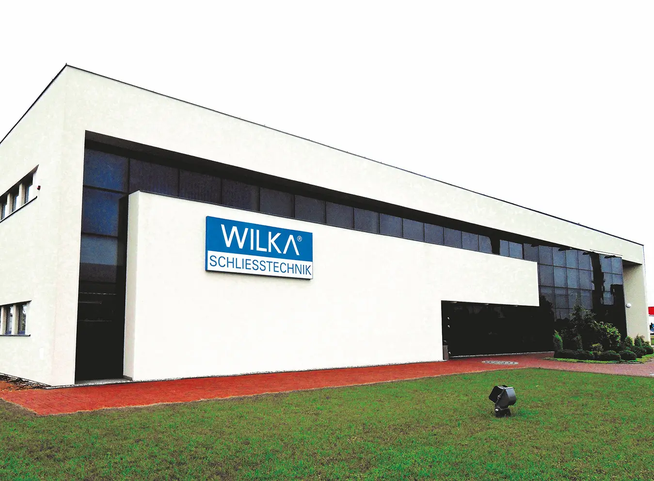
WILKA Polska opens up the Eastern European market
In 2001, the first WILKA reversible key system is presented to the market. It is positioned in the top security segment. In the lock area, crossbar and additional locks in an unusual design form a striking step. The first subsidiary is opened in Leszno, Poland, in autumn 2001 to counteract the downturn in construction activity in Germany, which has been ongoing for years. This is intended to cater for the future markets of Eastern Europe with a local service location. At the end of 2001, the first robot is used in production – a system for the fully automated production of reversible keys.
From product to solution
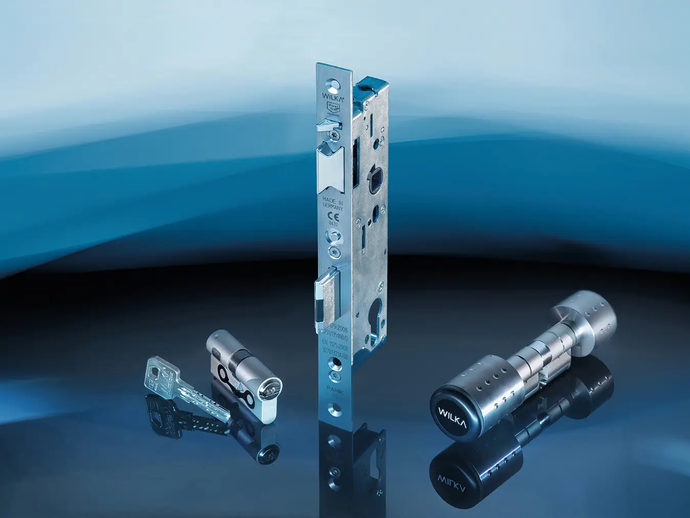
New electronic products are added to the range
In March 2003, Hans-Joachim Rust dies suddenly and Wolfgang K. Schlieper is appointed sole managing director by the shareholders. In 2008, WILKA introduces the first electronic cylinder based on the internationally widespread MIFARE standard and presents locking systems in the standard and reversible key range. In the same year, the company participates as one of the co-initiators in the regional initiative to create a university institute for hardware and security technology. It is an expression of the company's commitment to the region and the Velbert location.
From product to solution
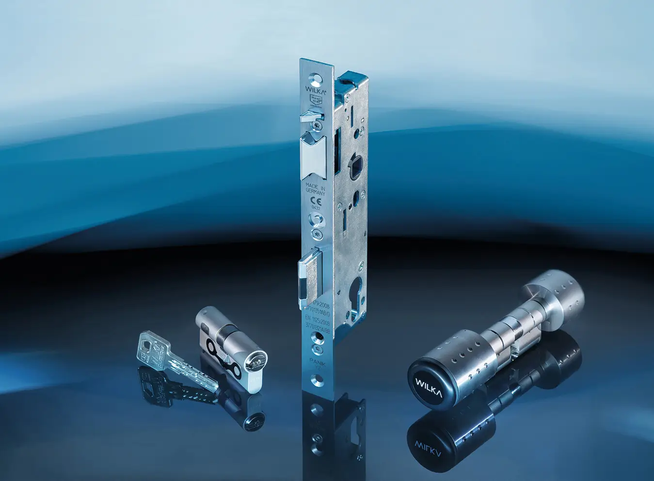
New electronic products are added to the range
In March 2003, Hans-Joachim Rust dies suddenly and Wolfgang K. Schlieper is appointed sole managing director by the shareholders. In 2008, WILKA introduces the first electronic cylinder based on the internationally widespread MIFARE standard and presents locking systems in the standard and reversible key range. In the same year, the company participates as one of the co-initiators in the regional initiative to create a university institute for hardware and security technology. It is an expression of the company's commitment to the region and the Velbert location.
Financial crisis and new investments
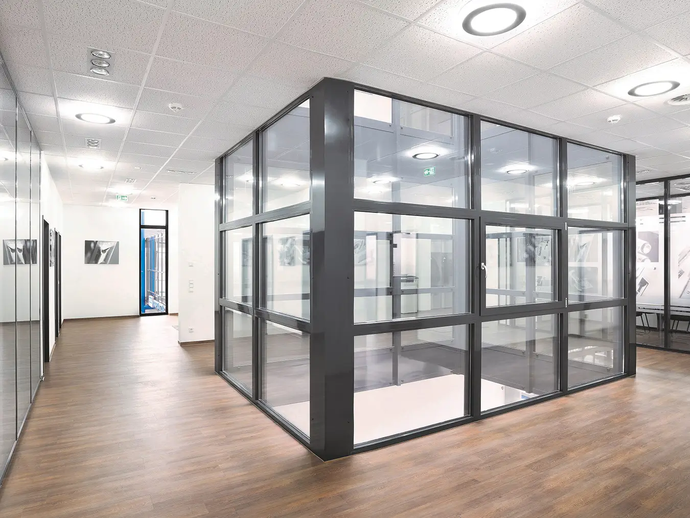
Stability during the crisis makes a new building possible
The global financial crisis in 2009 also leaves its mark on WILKA, even if it is affected far less than other sectors. In contrast to other companies in the sector, short-time working or redundancies are not necessary. At more than 5 million euros, 2012 sees the highest level of investment in the company's history to date. After many years, a striking new administrative building is being constructed. A modern sales and training centre appears in just over 5 months.
Financial crisis and new investments
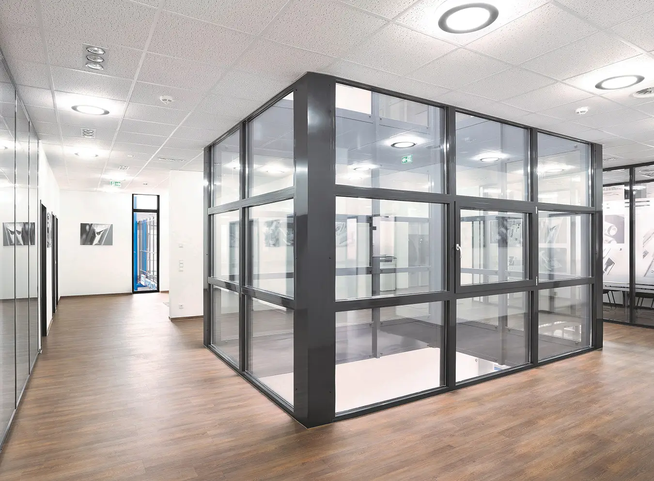
Stability during the crisis makes a new building possible
The global financial crisis in 2009 also leaves its mark on WILKA, even if it is affected far less than other sectors. In contrast to other companies in the sector, short-time working or redundancies are not necessary. At more than 5 million euros, 2012 sees the highest level of investment in the company's history to date. After many years, a striking new administrative building is being constructed. A modern sales and training centre appears in just over 5 months.
Handover to the 6th generation
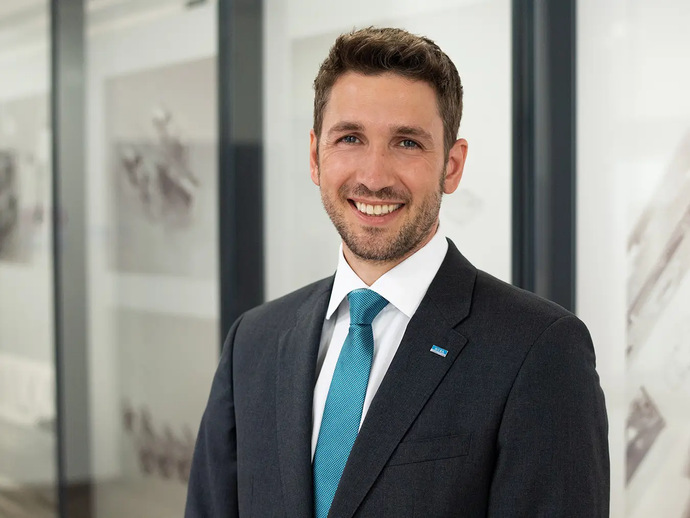
Metal construction becomes the new focus market
In 2016, after 27 years, Wolfgang K. Schlieper hands over the position of Managing Director to his son, Robert Schlieper, the grandson of Friedrich Karrenberg, and thus into the hands of the 6th generation. In the same year, the first measures for one of the largest restructuring processes within production are initiated. In 2017, the company's innovative spirit is clearly evident in its product development in the metal lock, cylinder and electronics sectors. The decision to focus on the metal construction industry leads to the discontinuation of the production of wooden locks.
Handover to the 6th generation
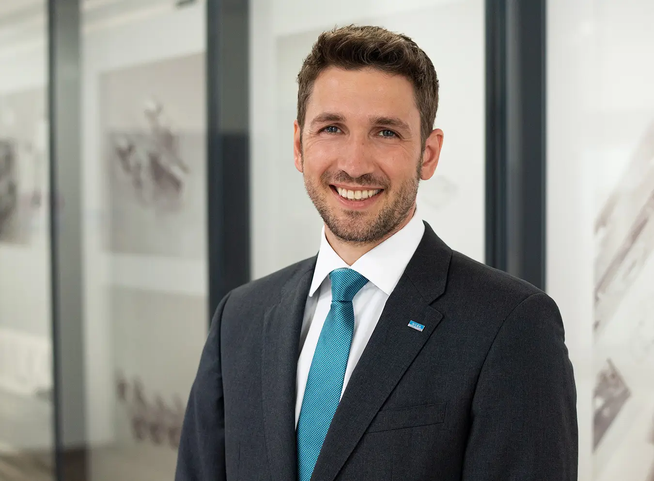
Metal construction becomes the new focus market
In 2016, after 27 years, Wolfgang K. Schlieper hands over the position of Managing Director to his son, Robert Schlieper, the grandson of Friedrich Karrenberg, and thus into the hands of the 6th generation. In the same year, the first measures for one of the largest restructuring processes within production are initiated. In 2017, the company's innovative spirit is clearly evident in its product development in the metal lock, cylinder and electronics sectors. The decision to focus on the metal construction industry leads to the discontinuation of the production of wooden locks.
Great ambitions with even greater challenges
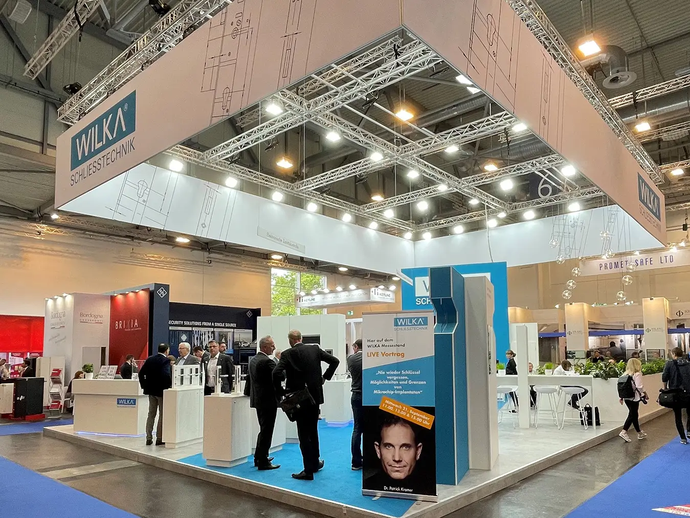
Getting through the pandemic with digitalisation
The company realigns itself with a forward-looking strategy to meet changing market requirements. The implementation of the strategy ensures profitability, as well as employee and customer satisfaction in the long term. The coronavirus crisis hits the whole world in February 2020 and demands a lot from both company management and every single employee. The constant changes in the legal situation and the severe impairment of personal collaboration due to the limitations imposed by social distancing require progress in digitalisation, as well as flexibility regarding mobile working.
Great ambitions with even greater challenges
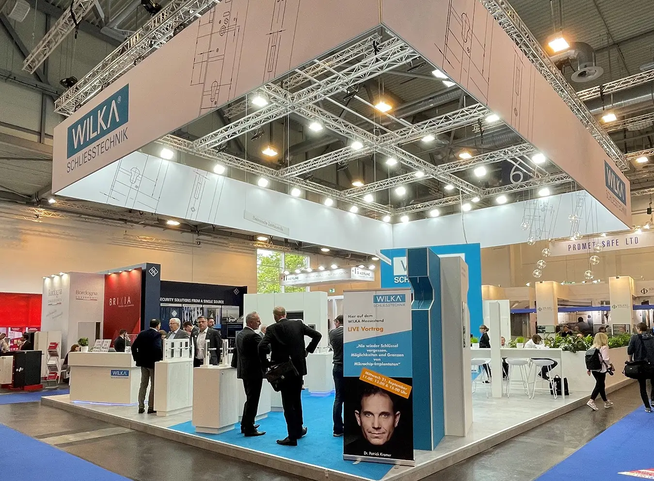
Getting through the pandemic with digitalisation
The company realigns itself with a forward-looking strategy to meet changing market requirements. The implementation of the strategy ensures profitability, as well as employee and customer satisfaction in the long term. The coronavirus crisis hits the whole world in February 2020 and demands a lot from both company management and every single employee. The constant changes in the legal situation and the severe impairment of personal collaboration due to the limitations imposed by social distancing require progress in digitalisation, as well as flexibility regarding mobile working.